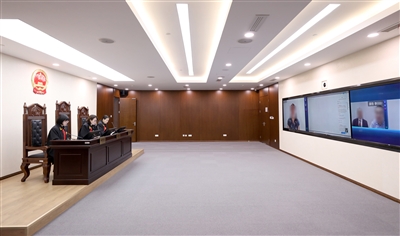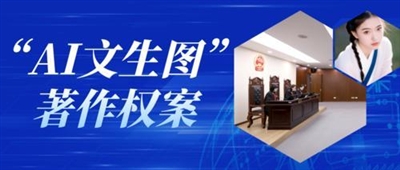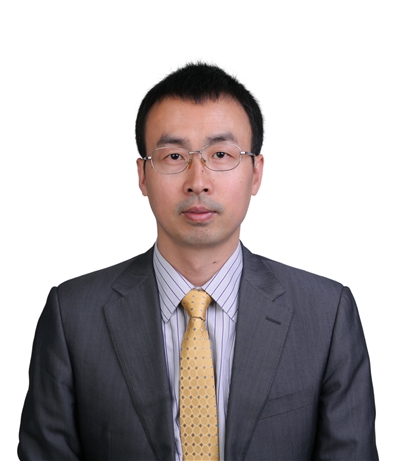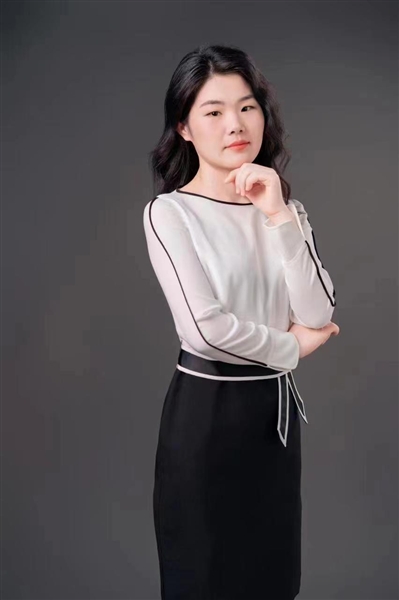Beijing Internet Court explores the demarcation of the copyright of "AI Wensheng Map"

The picture shows the trial site.
 guide reading
guide reading
Who should the copyright of the picture "work" generated by artificial intelligence belong to? With the rapid development of generative artificial intelligence technology, users only need to input some prompt words, and the AI model can produce corresponding words, pictures, codes and other content. So, is the content generated by AI protected by copyright law? How to define and divide the ownership of corresponding rights? Can people freely use the content generated by AI on the network? These copyright issues involving artificial intelligence urgently need a "statement" from the law. At the end of 2023, the Beijing Internet Court concluded the dispute over the right of signature and information network communication between Li and Liu’s works, made clear for the first time the attribute of using artificial intelligence to generate a picture "work", and put forward the view that whether the content generated by artificial intelligence constitutes a work needs to be judged on a case-by-case basis. The judgment of this case has made a pioneering exploration on the legal issues related to the products of artificial intelligence.
Pictures generated by artificial intelligence are used by others.
In August 2023, the plaintiff Li sued the court, claiming that on February 24, 2023, he used the open source software Stable Diffusion to generate a picture involved in the case by inputting hints, and published the picture on the platform of Little Red Book. After the plaintiff found that the defendant Liu used the pictures involved in an article in Baijiahao. The defendant not only did not get his own permission, but also cut off the signature watermark, which made the relevant users mistakenly think that the defendant was the author of the work, seriously infringing on his right of signature and information network dissemination. Therefore, the court is requested to order the defendant to publicly apologize at Baijia, eliminate the influence and compensate the economic loss of 5,000 yuan.
The defendant argued that the specific source of the pictures involved could not be provided, nor could the watermark of the pictures involved be explained, and it was uncertain whether the plaintiff enjoyed the rights of the pictures involved. The main content of the article published by the defendant is original poetry, not the pictures involved, and it has no commercial use and no intention of infringement.
The court found through trial that the process of generating the pictures involved was that the plaintiff downloaded the Stable Diffusion model, and then entered dozens of prompt words in the forward prompt words and the reverse prompt words respectively, and set the iteration steps, picture height, guide coefficient of prompt words and random seeds to generate the first picture; Under the condition that the above parameters are unchanged, the weight of one model is modified to generate a second picture; Under the condition that the above parameters are unchanged, the random seed is modified to generate a third picture; Under the condition that the above parameters remain unchanged, the content of positive prompt words is added to generate the fourth picture (that is, the picture involved).
Does the picture generated by artificial intelligence constitute a work?
According to the defense opinions of the defendant and the defendant and the facts ascertained, the Beijing Internet Court holds that the focus of the dispute and the difficulties in the trial are as follows: First, whether the pictures generated by artificial intelligence involved in the case constitute a work and what kind of work it constitutes; Second, whether the plaintiff enjoys the copyright of the pictures involved; Third, whether the accused behavior constitutes infringement and whether the defendant should bear legal responsibility.
First of all, from the appearance of the pictures involved, it is no different from the photos and paintings that people usually see. It obviously belongs to the art field and has certain forms of expression. The pictures involved were generated by the plaintiff using the generative artificial intelligence technology. From the time the plaintiff conceived the pictures involved to the time the pictures involved were finally selected, the plaintiff made some intellectual investments, such as designing the presentation mode of the characters, choosing the prompt words, arranging the order of the prompt words, setting relevant parameters, and choosing which picture meets the expectations. The pictures involved reflect the intellectual input of the plaintiff, so the pictures involved have the elements of "intellectual achievements".
Judging from the pictures involved, there are identifiable differences with previous works. Judging from the generation process of the pictures involved, the plaintiff designed the picture elements such as characters and their presentation methods through hints, and set the picture layout and composition through parameters, which reflected the plaintiff’s choice and arrangement. In addition, after the plaintiff obtained the first picture by inputting prompt words and setting relevant parameters, he continued to add prompt words and modify parameters, and constantly adjusted and corrected the picture involved. This adjustment and correction process reflected the plaintiff’s aesthetic choice and personality judgment. In the absence of evidence to the contrary, it can be concluded that the pictures involved were independently completed by the plaintiff, which reflects the plaintiff’s personalized expression, so the pictures involved have the elements of "originality".
The pictures involved are graphic plastic art works with aesthetic significance composed of lines and colors, which belong to art works and should be protected by copyright law.
Second, the plaintiff is the author of the pictures involved and enjoys the copyright of the pictures involved. As far as the ownership of the works involved is concerned, China’s copyright law stipulates that the author is limited to natural persons, legal persons or unincorporated organizations, so the artificial intelligence model itself cannot be the author stipulated by China’s copyright law. The plaintiff sets up the artificial intelligence model involved in the case according to the need, and finally selects the person involved in the case. The picture involved is directly generated based on the plaintiff’s intellectual input and reflects the plaintiff’s personalized expression, so the plaintiff is the author of the picture involved and enjoys the copyright of the picture involved.
Third, the defendant has infringed the rights enjoyed by the plaintiff and should bear the tort liability. In this case, the defendant, without permission, used the pictures involved in the case as illustrations and posted them in his Baijia account, so that the public could obtain the pictures involved in the case at the time and place selected by him, infringing on the plaintiff’s right to spread information on the network. In addition, the defendant removed the signature watermark from the pictures involved, which infringed the plaintiff’s signature right and should bear the tort liability.
To sum up, the Beijing Internet Court ruled in the first instance that the defendant apologized and compensated the plaintiff 500 yuan. In this regard, neither party has appealed, and the judgment has now taken effect.
■ referee analysis
Whether the content generated by artificial intelligence constitutes a work needs to be judged individually.
Beijing Internet Court Zhuge
In recent years, the academic discussion on the copyright of AI-generated content has never stopped, which provides a reference for the referee in this case.
In this case, the pictures involved were generated by the plaintiff using AI, and judged according to the constitutive requirements of the works in the copyright law. Because the pictures involved reflected the plaintiff’s original intellectual input, they were recognized as works, and the relevant copyrights belonged to the plaintiff. At the same time, the judgment of this case emphasizes that whether the content generated by artificial intelligence constitutes a work requires case-by-case judgment and cannot be generalized. The verdict of this case fully absorbed the academic discussion, which reflected "one inheritance" and "two considerations".
"One inheritance", that is, the judgment of this case, is the inheritance and development of the previous "Film Law Firm v. Baidu Copyright Case" in Beijing Internet Court. This case continues to adhere to the view that the copyright law only protects the creation of natural persons, while the artificial intelligence model does not have free will, is not the subject of law, and cannot be the "author" in China’s copyright law; This case continues to hold that under normal circumstances, the right to generate pictures by using AI belongs to the person who uses artificial intelligence software; In addition, the case continues to emphasize that according to the principle of good faith and the need to protect the public’s right to know, relevant subjects should clearly mark the artificial intelligence technology or model they use. Different from the previous case, except the artificial intelligence model involved in the case is more intelligent, the plaintiff in this case has more intellectual input, so it has the basis for further exploring the application of copyright law to protect it.
During the trial of the case, we repeatedly conducted "two considerations":
First, when the traditional theory encounters a brand-new application scenario, whether it should be adjusted and developed. We believe that only by adhering to the future-oriented judicial concept can we better encourage the application of new technologies and promote the development of new formats. The original copyright theory and practice presupposed art works as the main creative way, which was determined by the technical level of creative tools at that time. Since entering the era of artificial intelligence, human creative tools have undergone fundamental changes. People no longer need to draw lines and fill colors, but use AI to create, but this does not mean that human beings do not need to choose and arrange picture elements. By designing hints, different people will produce different results, which can reflect the original intellectual input of human beings. In this brand-new technical background, the traditional copyright theory and the reality of technical development have not matched, so it should be adjusted and developed to better meet the needs of rights protection and industrial development. Therefore, we can’t stick to the historical standards. Only by thinking about the future can we choose the path of the present.
Second, whether the identification of works is only based on legal judgment is also a question of value judgment. "Originality", as a rule to define the core elements of a work, is gradually established by the courts of various countries through the trial of individual cases. In this process, there are arguments in the theoretical circle and reference from judicial practice, and more importantly, it is based on the balance of interests, and comprehensively considers the types of works, creative space, industrial policies, public demand and other factors in the field, trying to make the best explanation. At the moment when China’s artificial intelligence industry is developing rapidly, how to serve and ensure the healthy and efficient development of the industry based on China’s specific reality and China’s value consensus is the question of the times that we must answer. In this context, based on the value measurement of the country, society, citizens and other dimensions, we believe that by recognizing the "work" attribute of pictures generated by artificial intelligence and the user’s "creator" identity, it is more conducive to encouraging users to use AI tools to create enthusiasm, thus realizing the inherent goal of "encouraging works to create" in the copyright law, promoting relevant subjects to identify the content generated by AI, thus promoting the implementation of regulatory laws and regulations, and protecting the public’s right to know, and strengthening people’s awareness.
■ Views of all parties
It is confirmed for the first time that AI generates the attribute of "Art Works"
 Cui Guobin, Professor of Tsinghua University Law School
Cui Guobin, Professor of Tsinghua University Law School
The judgment of this case has made a meaningful exploration of many copyright problems caused by generative AI, and put forward reasonable solutions. This is innovative on a global scale and has important reference value for future judicial practice and academic research.
First of all, the court confirmed the "art work" attribute of AI products. The court held that users use generative AI to output pictures, even if AI users do not directly draw lines and colors, they may still constitute intellectual achievements in the sense of copyright law and fall into the category of "works of art", regardless of the necessity of "other works". When the legislator did not create a new category for such works, the court included it in the scope of "art works", which was in line with public expectations.
Secondly, the court clearly judges whether the user has made an original contribution. The court stressed that "whether the use of artificial intelligence to generate pictures reflects the author’s personalized expression requires case judgment and cannot be generalized." "After the plaintiff obtained the first picture by inputting prompt words and setting relevant parameters, he continued to add prompt words, modify parameters, and constantly adjusted and corrected, and finally obtained the picture involved. This adjustment and correction process also reflected the plaintiff’s aesthetic choice and personality judgment." In this case, whether the user’s actual creative behavior leads to the AI ? ? output fully reflecting its personality is a matter of fact, and there is room for debate. However, the court’s thinking of analyzing legal issues is completely in line with the underlying logic of copyright law and public policy, leaving more flexible space for the development of new technologies. After selecting the first draft of the picture output by AI, users have a relatively specific idea of the work, and then modify it repeatedly on this basis. In theory, as long as there are enough rounds or details, users do have the possibility of making specific original contributions.
Under the background of the increasing integration of painting programming tools (such as Photoshop) and generative AI system, copyright law should encourage the public to use new creative tools to create more and better works of art, instead of discriminating against users of such tools, easily denying users’ original contributions and forcing users to stay away from such powerful creative tools. Therefore, I agree with the court’s judgment that "it is more conducive to the creation of works and the development of artificial intelligence technology to encourage more people to create with the latest tools by appropriate legal means", which is far more forward-looking than the general objection of denying the original contribution of users.
In addition, this judgment also deeply discusses the attribution of AI-assisted creative works. The court emphasized that the designer of AI system is only the producer of creative tools, and "there is neither the will to create the pictures involved nor the pre-set subsequent generation content". At the same time, the designer of the artificial intelligence model involved in the case gives up the right to claim the output content in the license provided by him. Therefore, the developer of AI system is not the author of the dispute picture. In the court’s view, "the plaintiff directly sets the artificial intelligence model involved in the case according to the needs, and finally selects the picture involved. The picture involved is directly generated based on the plaintiff’s intellectual input and reflects the plaintiff’s personalized expression, so the plaintiff is the author of the picture involved." This idea is worthy of recognition.
Finally, it is worth mentioning that the court’s application of the minimum amount of statutory compensation (500 yuan) should also be a balanced choice reflecting the judicial policy. Many people are worried that copyright law will protect the works created by users using AI, which will lead to the proliferation of infringement lawsuits related to AI works and harm the public interests of society. In order to avoid this negative consequence, the court should consider the particularity of AI creation when determining the standard of damages, and avoid over-compensation to users, thus stimulating too many lawsuits. In this case, it is a reasonable choice to choose the lower limit of legal compensation "according to the pictures involved and the circumstances of infringement use", which reflects this important judicial policy. Of course, this does not rule out that in future cases, users will use AI to create high-value works and get higher damages.
Very valuable pioneering exploration

Shen Fen, a big model manufacturer.
Through this case, Beijing Internet Court made a very valuable and pioneering exploration on the legal issues related to artificial intelligence products.
In the concept of recognition, it is confirmed that users can obtain the copyright of artificial intelligence products. In this case, the court found that natural persons can obtain the copyright of products by making substantial contributions in the process of using generative artificial intelligence. This has a positive effect on encouraging users to actively use artificial intelligence to create high-quality works.
Protecting the works that users have made substantial contributions in the process of product production plays an important and positive role in the use and promotion of generative artificial intelligence. In the process of ownership determination, it is equally important to consider and respect the contracts between the designers, providers and users of artificial intelligence models and services to help the market-oriented development of artificial intelligence industry and support the formation of various business models. It is of great significance for the development of China’s artificial intelligence industry and the improvement of the quality of cultural and artistic works to give reasonable protection to high-quality works created by generative artificial intelligence and help users, artificial intelligence developers and operators to realize closed-loop business.